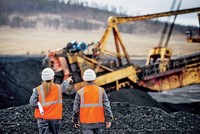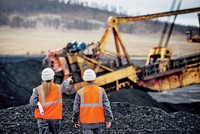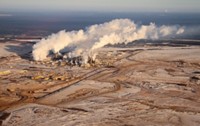Advertisement
Grab your lab coat. Let's get started
Welcome!
Welcome!
Create an account below to get 6 C&EN articles per month, receive newsletters and more - all free.
It seems this is your first time logging in online. Please enter the following information to continue.
As an ACS member you automatically get access to this site. All we need is few more details to create your reading experience.
Not you? Sign in with a different account.
Not you? Sign in with a different account.
ERROR 1
ERROR 1
ERROR 2
ERROR 2
ERROR 2
ERROR 2
ERROR 2
Password and Confirm password must match.
If you have an ACS member number, please enter it here so we can link this account to your membership. (optional)
ERROR 2
ACS values your privacy. By submitting your information, you are gaining access to C&EN and subscribing to our weekly newsletter. We use the information you provide to make your reading experience better, and we will never sell your data to third party members.
Environment
Refining Low-Quality Crude Produces High Greenhouse Gas Emissions
Energy: New research links high CO2 emissions to refining tar sands and other low-grade petroleum feedstocks
by Charlie Schmidt
December 8, 2010

Confronted with growing energy demands and declining supplies of high-quality petroleum, oil companies have started to exploit alternatives such as heavy crude and tar sands. Now a new report says that refining fuel from inferior feedstocks can sharply elevate carbon dioxide emissions (Environ. Sci. Technol., DOI: 10.1021/es1019965).
"These increases come from refining the fuel, not from added emissions at the tailpipe," explains biologist Greg Karras, a senior scientist with Communities for a Better Environment, an environmental group in Oakland, Calif. The energy needed to process fuel depends on the quality of the crude feedstock, he says: "As the quality of the feedstock declines, it takes more energy to refine it."
Petroleum quality depends on several parameters, including sulfur content and density, which relates to the hydrogen-to-carbon ratio of the crude's hydrocarbons. Sulfur poisons refinery catalysts, so it has to be removed. Meanwhile high-density crudes have molecules with low hydrogen-to-carbon ratios that combust less efficiently than do more-saturated hydrocarbons. As a result, refineries inject hydrogen into low-quality petroleum feedstocks. Experts refer to the amount of energy needed to refine crude as "process intensity."
Karras wanted to understand how CO2 emissions related to process intensity on a global scale. But most previous studies only looked at individual refineries. So he tapped databases at the Department of Energy's Energy Information Administration (EIA), which monitors refineries throughout the U.S. The EIA collects data for dozens of parameters relating to feedstock chemistry, but Karras found that he could predict process intensity and related CO2 emissions almost entirely from the feedstock's density and sulfur content.
Using data on those two parameters for different crude types, Karras could then calculate how a global shift to low-quality feedstocks would increase CO2 emissions. He found that levels would increase by up to one-third over current levels. The greatest emissions came from tar sands, which have very high density and sulfur content: Completely shifting to that feedstock produced 3.6 billion metric tons of CO2 per year, compared to 1.6 billion metric tons for fuels derived completely from heavy crude. Currently, global CO2 emissions from oil use, including refining and exhaust from vehicles, are now 11.3 billion metric tons, according to EIA.
Adam Brandt, an energy resources engineer at Stanford University, commended Karras for generating models based on the EIA data. "Refinery CO2 emissions can be hard to get a handle on," he says. "They're either based on proprietary data that aren't typically available for outside research or they're calculated from process models that can only be interpreted with facility-specific expertise."
Margaret Torn, who heads the Climate & Carbon Sciences Program at the Lawrence Berkeley National Laboratory, says Karras' results also highlight an often overlooked point: Emissions from refining vary widely by fuel type and so policymakers must consider that variability when setting CO2 emissions targets.
Karras agrees, pointing out that refineries need expensive technology to process low-quality fuels. And once they've bought that equipment, they'll want to use it to get a return on their investment. A better approach, he says, is to avoid low-quality feedstocks altogether, in favor of alternative energy sources: "Once we go down the road of refining low-quality crude, it's going to be hard to change direction."





Join the conversation
Contact the reporter
Submit a Letter to the Editor for publication
Engage with us on Twitter